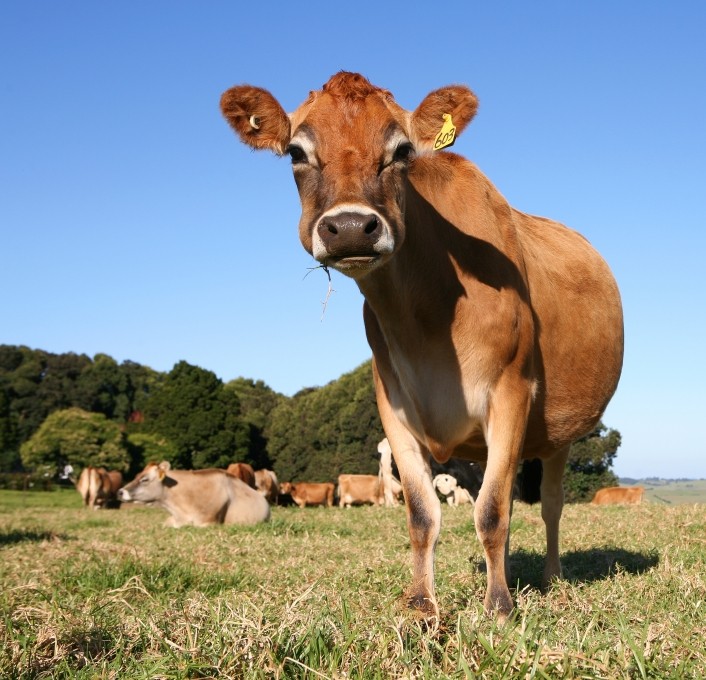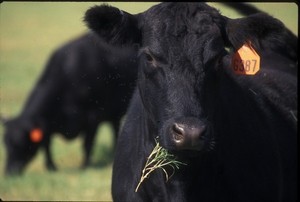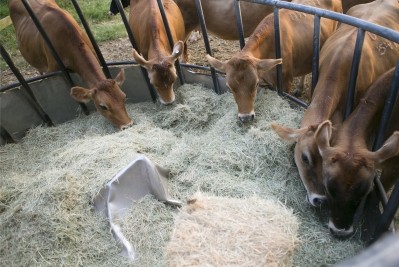How much time on forage protects cattle production and pasture quality?

A team of researchers at the Instituto de Producción Animal, Universidad de la República in Uruguay examined the influence of feeding duration on the digestion and production of beef cows.
The group published their findings in the journal of Animal Feed Science and Technology.
“The aim of this study was to evaluate the effect of increasingly restricting the time of access to forage on the intake and digestive and metabolic utilization of nutrients by heifers consuming a fresh high-quality forage,” the researchers said.
The group found that limiting the amount of time cows had on pasture did not alter nutrient digestibility, but did produce an overall reduction in forage intake. The limiting factors when forage access was restricted to six hours or less should be considered when planning feeding strategies for cattle.
“Beef heifers increased their intake rate and the proportion of time spent in feeding activities in response to the restriction in the time of access to a fresh high-quality forage,” they said. “However, these compensatory mechanisms were insufficient to maintain the level of nutrient intake achieved by animals without restricted access – although nutrient digestibility was not affected by the time restriction, six hours of allowance time appears as a threshold below which the animals can not compensate the lack of time to eat.”
Southern Hemisphere challenges
Pasture use in feeding cattle is considered a sustainable practice that prompts better conditions for animals and the environment in temperate regions of the Southern Hemisphere, said the researchers.
But pasture management is an important aspect, especially in intensive grazing systems, they added.
Limiting the amount of time cattle can have access to pasture forage helps protect the feed quality and manage manure deposition, they said.
“In response to a restriction in the time available to eat, there is generally an increase in the intake rate and/or the proportion of effective grazing time at the expense of rumination as the animals attempt to maintain their intake of dry matter (DM),” said the researchers. “However, it is not clear to what extent animals can compensate for the lack of time to eat, nor the consequences that this behavior has on nutrient digestion and utilization.”
In previous studies examining grazing time for lactating dairy cows, reducing allowed grazing from eight hours to four hours limited feed intake and milk production, even when supplements were offered, they said. Work with beef cattle only fed forage, when forage intake was altered from 24 to five hour access saw a similar drop in intake.
However, that same drop in feed intake was not seen when access was shortened from 24 hours to a 12-15 hour window for cattle regardless of supplement, they said.
“Most of the information available on restricting feeding time concerns its effect on intake and feeding behavior, but changes in the ingestive pattern can also affect the ruminal environment and digestive utilization,” said the researchers.
A past study on grazing periods also found a drop in forage digestibility for cattle, but that was not seen in sheep, they added.
“It is clear that the response to restricted grazing access is highly dependent on the level of restriction, as well as on the animal species,” they said. “In the case of beef cattle, there is little information about which level of restricted access to a fresh high-quality forage induces behavioral adaptations that affect ruminal fermentation and forage digestibility.”
However, those changes may alter the nutrients available to the animal and the overall production, they said.
Methods and materials
In the study, 24 heifers were assigned one of four diets with different amounts of availability to fresh forage, said the researches. The diets included 24 hours (T24), eight hours (T8), six hours (T6) or four hours (T4) of access to fresh pasture.
Cattle had a 14-day adaption period and were then tracked for 17 days, they said. Animals were assessed for time spent eating, ruminating or other and the frequency of each action was established along with intake rate.
Ruminal fluid samples were taken hourly for 24 hours on day five and tested for pH and nitrogen (N) concentration, said the researchers. Feed intake was established for 10 consecutive days, blood samples were taken on day 17 and fecal matter and urine were collected for days 12-16,
Samples were examined for nitrogen and ammonia levels along with efficiency of microbial protein (MP) synthesis and glucose and urea contents, they said.
Results
Feed intake dropped linearly as cattle had reduced time on forage, said the researchers. “The dry matter intake of the T24, T8, T6 and T4 animals was 23, 19, 18, and 13 ± 1 g/kg of BW [body weight], respectively,” they added.
“In general, the effects of the restriction seem to have been less evident on digestion than on ingestion,” they said. “Fasting beef heifers led to behavioral changes in order to maintain the dry matter intake, but these changes resulted insufficient when the time of access to forage drops below 6 hours per day.”
As access to feed was limited, the amount of time spent eating in the first four hours increased, they said. However, the intake rate of animals in the different groups was similar after the first hour.
The digestibility of the different aspects was not altered by the feeding times, they said. “Nitrogen ingestion and retention decreased at an increasing rate as the time of access to forage decreased from 8 hours of access to forage, whereas fecal and urinary excreted N linearly decreased,” they added.
MP synthesis in the rumen also tended to decline as access to forage was restricted, said the researchers. But, the efficiency of synthesis was not altered.
However, ruminal pH and ammonia concentration were altered by diet and time, they said. The pH increased as the amount of access to feed declined, while ammonia decreased for cows with limited feeding but was less variable in unrestricted animals.
“While in the unrestricted animals, the ruminal pH was very stable, in restricted ones decreased after the ingestion and increased after hour 13, reaching values above 7 before the start of the next feeding session,” they said.
Levels of glucose, insulin and urea in the blood were altered by when the sampling was done in regards to the start of feeding, but not by amount of time on forage, they said.
Source: Animal Feed Science and Technology
Title: Restricting the time of access to fresh forage reduces intake and energy balance but does not affect the digestive utilization of nutrients in beef heifers
DOI: published online before print: 10.1016/j.anifeedsci.2017.02.016
Authors: A. Félix, J. Repetto, N. Hernández, A. Pérez-Ruchel, C. Cajarville,










